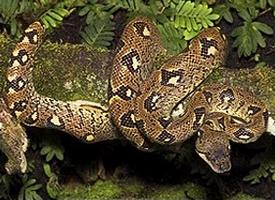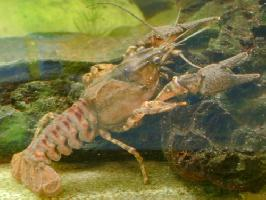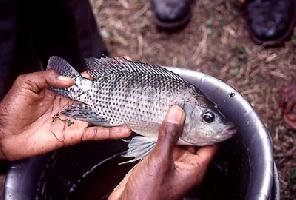
Váhy a míry
| Délka | 2 m |
|---|
Biologická data
| Počet mláďat | 15 |
|---|
Stav ohrožení
| Ohrožen |
Popis zvířete
The Madagascar tree boa, scientifically named Sanzinia madagascariensis, is a fascinating and unique species of boa native to the island of Madagascar. This species is a prime example of Madagascar's rich and diverse wildlife, showcasing the island's capacity for evolutionary marvels. Characterized by its striking appearance and arboreal lifestyle, the Madagascar tree boa plays a crucial role in its ecosystem and captivates the interest of herpetologists and wildlife enthusiasts alike.Physical Description:
The Madagascar tree boa exhibits a robust and muscular body, designed perfectly for its life among the trees. Adults can reach lengths of up to 5 to 6 feet (about 1.5 to 1.8 meters), though sizes can vary. Their scales are smooth, providing a glossy appearance that is both beautiful and functional, helping to reduce friction as they navigate through the branches. These boas display a range of colors, from bright greens to rusty reds, often with patterns of darker spots or bands that provide excellent camouflage against the foliage. The coloration is not just for disguise; it also plays a role in thermoregulation, with darker individuals absorbing more heat in the cooler, elevated regions of Madagascar.
Behavior and Ecology:
Madagascar tree boas are predominantly nocturnal, spending their days hidden among the leaves and branches to avoid predators and reduce water loss. At night, they become active hunters, using their heat-sensitive pits located around the mouth to detect warm-blooded prey such as small mammals and birds. Their method of predation is typical of boas; they strike quickly, seizing the prey with their sharp teeth before coiling around it and applying constriction until suffocation occurs.
These boas are solitary creatures, coming together only for mating purposes. They exhibit ovoviviparity, where the female retains the eggs inside her body until they are ready to hatch, giving birth to live young. This reproductive strategy is advantageous in their arboreal habitat, reducing the risk of eggs being predated upon or failing to incubate properly due to temperature fluctuations.
Habitat:
Sanzinia madagascariensis is found exclusively in Madagascar, inhabiting a variety of forest types, including rainforests, dry deciduous forests, and occasionally the more open areas adjacent to these forests. Their arboreal nature means they are rarely found on the ground, preferring instead the canopy and mid-levels of the forest where there is an abundance of hiding spots and hunting opportunities.
Conservation Status:
Like many of Madagascar's endemic species, the Madagascar tree boa faces threats from habitat destruction due to deforestation, agriculture, and expanding human settlements. While currently listed as Least Concern by the IUCN Red List, its population is believed to be declining. Conservation efforts are essential to ensure the survival of this species, requiring both local and international collaboration to protect Madagascar's unique habitats and biodiversity.
In conclusion, the Madagascar tree boa is a remarkable reptile that embodies the beauty and ecological complexity of Madagascar's wildlife. Its adaptation to an arboreal lifestyle, striking appearance, and role in the ecosystem make it a species of great interest not only to the scientific community but also to conservationists aiming to preserve the rich biodiversity of Madagascar.
Podobná zvířata
Nové fotografie zvířat
Top 10 zvířat
- Chinese water dragon (Physignathus cocincinus)
- Galápagos tortoise (Geochelone nigra complex)
- Dolphin gull (Leucophaeus scoresbii)
- Japanese macaque (Macaca fuscata)
- Colombian red howler (Alouatta seniculus)
- Sea urchins (Echinoidea)
- Moustached guenon (Cercopithecus cephus)
- Diana monkey (Cercopithecus diana)
- Common reed warbler (Acrocephalus scirpaceus)
- Common house mosquito (Culex pipiens)


